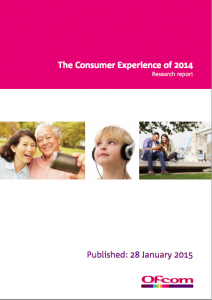
After more than 40 years of operation, DTVE is closing its doors and our website will no longer be updated daily. Thank you for all of your support.
‘Significant increase’ in no-TV households, says Ofcom
 Digital TVs can now be found in 96% of UK homes, but there has been a “significant increase” in the proportion of homes without, according to Ofcom.
Digital TVs can now be found in 96% of UK homes, but there has been a “significant increase” in the proportion of homes without, according to Ofcom.
The UK broadcast regulator’s ‘Consumer Experience of 2014’ research report claims that that since 2013 the proportion of households with digital TVs has fallen from 98% to 96%.
Younger people were most likely to not have a home television, with 15% of students and 7% of people aged 16 to 34 now doing without.
At the same time, Ofcom reported that take-up of tablet computers has continued to increase over the past year, from 29% in 2013 to 46% last year.
Take-up of smartphones has also continued to rise, climbing from 56% to 63%, while laptop ownership has declined from 66% to 63%. Some 12% of homes were found to have smart TVs.
“As a result smartphones are now the most dominant connected device in the household, alongside laptops,” said Ofcom, adding that total ownership of any type of connected device is unchanged since 2013 at 82%.
According to the report, 61% of adults receive pay TV in the UK, an increase from 58% in 2013, which cuts across all age and socio-economic groups.
The number of consumers with bundled services – triple-play fixed-line, broadband and multichannel TV bundles – also continues to rise, climbing from 60% in 2013 to 63% in 2014.
“There was a mixed picture in pay TV pricing. The lowest price available for a basic stand-alone pay TV service increased by £1 per month (8%) to £17 per month in the year July 2014. This was 14% lower than the lowest price of a similar service in 2011 (£20 per month). The ‘lowest available’ price for an HD premium pay TV service fell by £3 per month (5%) to £63 per month in the year to July 2014,” said Ofcom.


